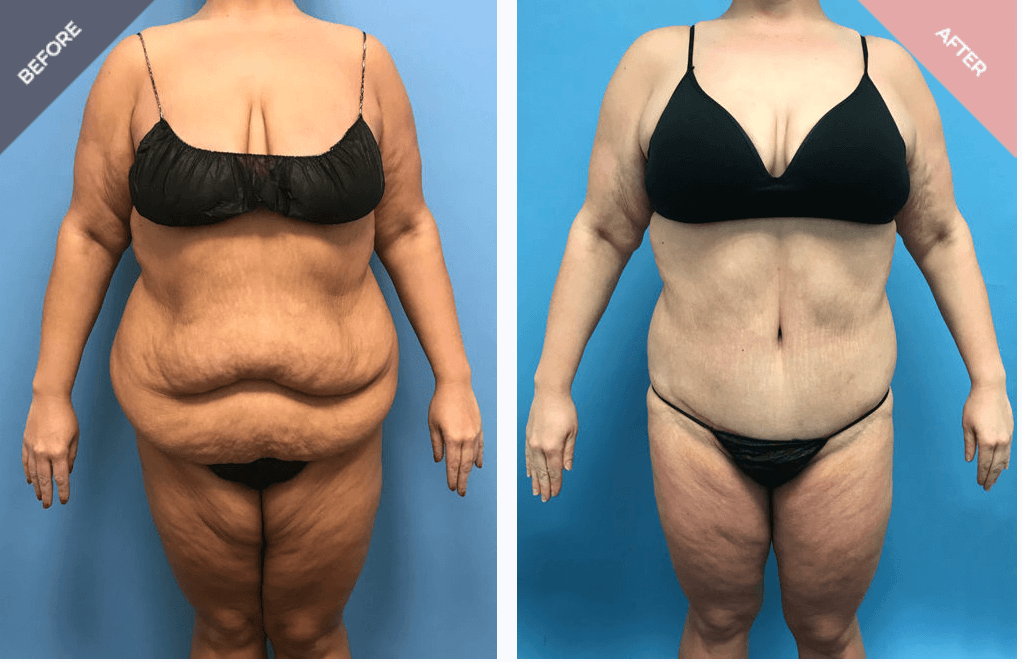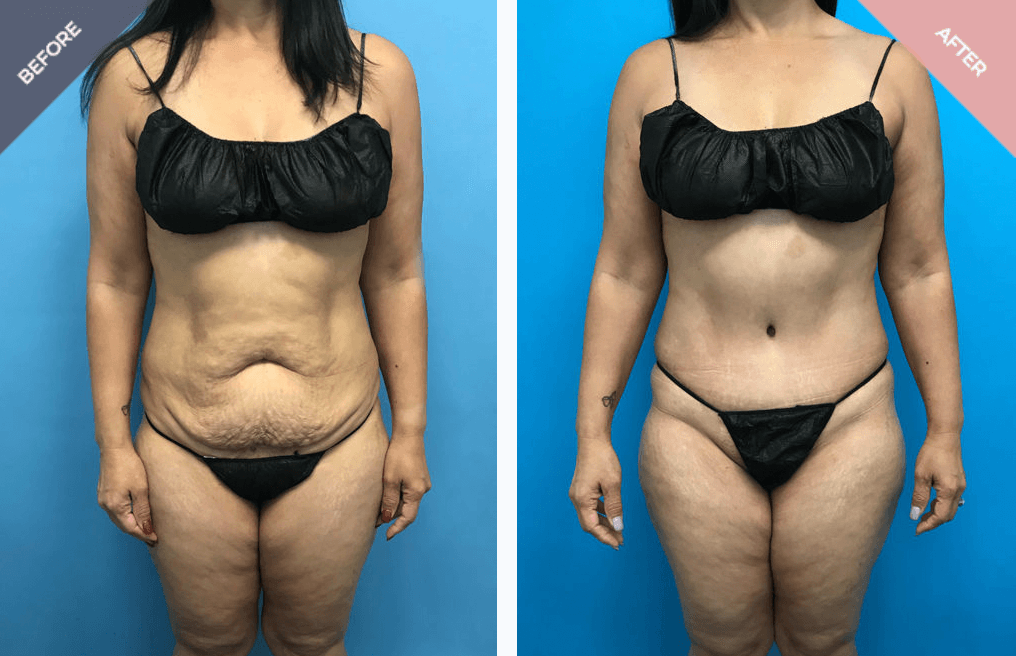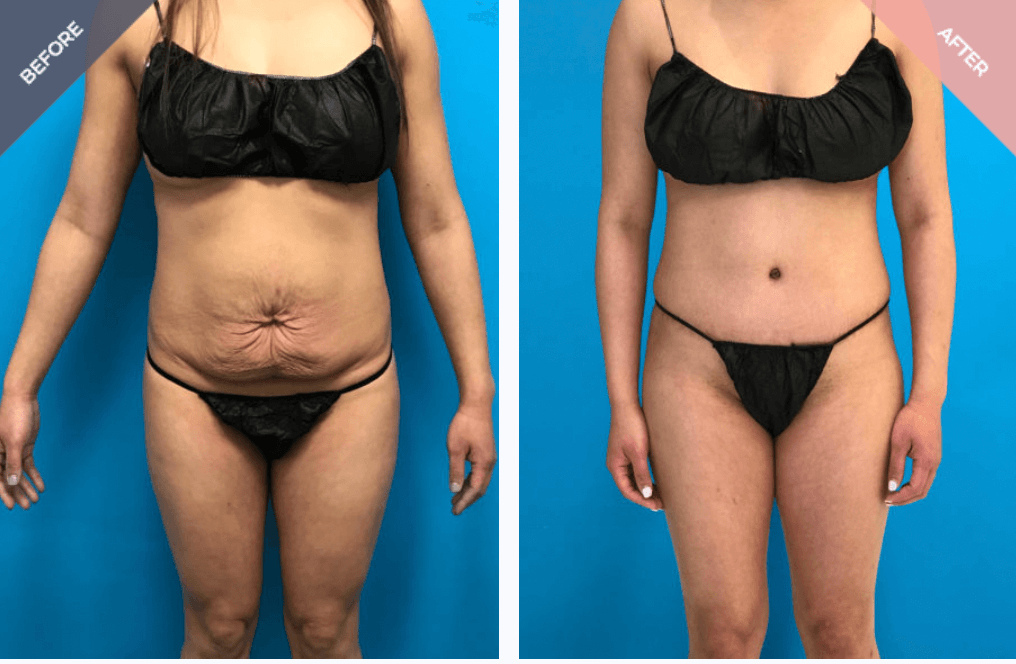Enhancing Recovery: The Benefits of Muscle Repair in Tummy Tuck Surgery
True or false: tummy tucks are purely for aesthetics.
In reality, abdominoplasty is about way more than improving your looks. It has the potential to drastically improve your well-being and address the challenges that come with abdominal muscle separation.
At Dr. Cat Plastic Surgery, we’ve performed thousands of tummy tuck muscle repairs, transforming not just the way patients look but how their internal bodies function. The result? More core strength, better posture, and the bonus of a gorgeous midsection.
But how do you know if muscle repair surgery is right for you?
Keep reading as we explore the signs of stomach muscle separation, why it happens, and if a tummy tuck is the solution you never realized you needed.
Understanding Diastasis Recti

It’s no secret that pregnancy can prompt some pretty unexpected changes to your body—from sagging breasts to post-cesarian belly hang.
Another common issue you can experience is the separation of the rectus (or six-pack) muscles in the stomach. Known as diastasis recti, this condition can occur during pregnancy or months, even years after giving birth.
While anyone can experience diastasis recti, some factors increase your risk of developing the condition, such as:
- Bearing multiple babies at once
- Delivering a baby that’s larger or heavier than average
- An excess of amniotic fluid
- Multiple pregnancies (especially back-to-back)
- Excess weight gain
- Rapid weight loss in a short period
Long story short? The shifting of your abdominal organs (particularly during pregnancy), along with stress and hormonal changes, can all affect how elastic your stomach’s connective tissues are. This is why many moms opt for a tummy tuck postpartum.
So, how do you know if you have diastasis recti? You’d experience symptoms like:
- A pooch or bulge protruding around your belly button
- Softness or a jelly-like feeling in your midsection
- Coning or doming when you flex your ab muscles
- Difficulty lifting objects, walking, or performing everyday tasks
- Pain during sexual intercourse
- Pelvic, hip, or lower-back pain
- Poor posture
- Bladder incontinence when coughing or sneezing
- Constipation
Sometimes, you can see improvements with exercise. However, most people find tummy tuck surgery is often the best solution.
Abdominal Muscle Tightening with Tummy Tuck

A tummy tuck corrects diastasis recti by restoring rectus muscles to their natural position, but the benefits extend well beyond muscle repair.
Benefits of Abdominoplasty with Diastasis Recti
Curious about the perks accompanying tummy tuck muscle repair? You can enjoy benefits like:
- Less pain in your hips and lower back
- Better posture and stability
- Increased strength in your core
- More tone and definition in the belly
- Relieved incontinence
- Restored confidence and self-love
- Improved comfort and quality of life
Another advantage? Surgical body contouring is usually considered eclectic surgery. Therefore, insurance seldom covers them. However, in cases of abdominoplasty with diastasis recti, there may be some exceptions.
Suppose surgery is medically necessary to relieve chronic pain or urinary incontinence (which can stem from diastasis recti). In such cases, insurance might cover some of your tummy tuck costs.
As for who’s a right fit for muscle repair surgery…
Ideal Tummy Tuck Candidates
Not everyone with diastasis recti is a perfect candidate. For instance, individuals with mild diastasis recti or planning on getting pregnant soon might benefit more from alternative treatments.
Tummy tuck muscle repair is ideal if you experience:
- Full diastasis recti
- An abdominal bulge that’s resistant to diet and exercise
- Pain or difficulty contracting your abdominal core
- Poor posture and stability
- Pain in your hips, back, or during sex
At your consultation with Dr. Cat, she’ll walk you through various options, tailoring a solution that suits your needs and anatomy best.
Now, let’s see what your surgery entails.
Muscle Repair Surgery
After your anesthesia kicks in, Dr. Cat begins by making a thin, barely visible incision from one side of the hip to the other and around the belly button.
From there, she can lift the skin and access your stomach muscles. She takes her time to restore your abdominal muscle, tightening it to its original state and creating a corset-like abdominal wall at the same time.
After she tightens the muscles and abdominal wall, she stretches and tightens the abdominal skin, taking her time to create beautifully balanced surgical body contouring.
She then trims away the excess skin, carefully closes your incision, and creates her signature, natural-looking innie belly button.
Tummy Tuck Recovery
Thanks to Dr. Cat’s specialized approach, most of her patients say tummy tuck recovery is a breeze.
Week 1
You’ll have drains for the first two weeks or so to avoid fluid build-up in your surgical site. Some bruising, swelling, and tenderness are expected.
You’ll also wear a binder for six to eight weeks designed for maximizing healing and enhancing tummy tuck results.
During this time, mobility is limited. You’ll need some help getting around and be required to walk with a slight bend.
Your main focus now? Resting and easing into recovery.
Week 2
Your drains are gone, and you gradually feel more energy returning.
You’ll continue to lay low and incorporate brief, slow walks throughout the day.
While standing a little straighter, you should keep a slight bend to protect your surgical site.
Week 3
You start to feel a bit more like yourself, and guess what? You can stand up straight again.
Some bruising and swelling are normal but will slowly subside.
Weeks 4 to 6
Around this time, Dr. Cat will clear you to stop wearing your binder and begin her exclusive scar treatment.
You can now ease back into work and your daily routine.
Missing the gym? Dr. Cat will likely give you the green light to jump back into your workouts.
Month 3+
From this point forward, you’re reaping the benefits of your healed tummy tuck muscle repair. Your core feels stronger than ever, you stand taller, and you love your flat tummy.
Other tips for long-term tummy tuck maintenance include:
- Follow your surgeon’s advice
- Maintain a stable weight
- Eat a balanced diet
- Stay active
- Avoid smoking or vaping
- Time your pregnancies
Potential Risks

As life-changing as a tummy tuck is, abdominoplasty with diastasis recti isn’t without its risks. These can include:
- Noticeable tummy tuck scars
- Infection or excess bleeding
- Changes in skin sensation
- Pain and discomfort
- Disappointment with your results
- Need for a revision tummy tuck
The best way to avoid a suboptimal tummy tuck? Choose a surgeon with a proven track record of exceptional outcomes.
Dr. Cat Plastic Surgery: Repairing Muscles, Restoring Self-Love
As you’ve learned, a tummy tuck has the power to restore your midsection to its firm, natural state while reigniting a comfort (and confidence) you thought was out of your reach.
But you need the right provider to get you there. That’s where the expertise of a renowned surgeon like Dr. Cat Huang-Begovic is truly invaluable.
Dr. Cat’s extensive experience in tummy tuck muscle repair makes her a true master in tackling the functional and aesthetic challenges that come with diastasis recti. With her meticulous eye for detail, artful approach, and commitment to patient happiness—Dr. Cat consistently delivers unparalleled results that patients adore.
Now, it’s your time to shine. Schedule a consultation with Dr. Cat today.

